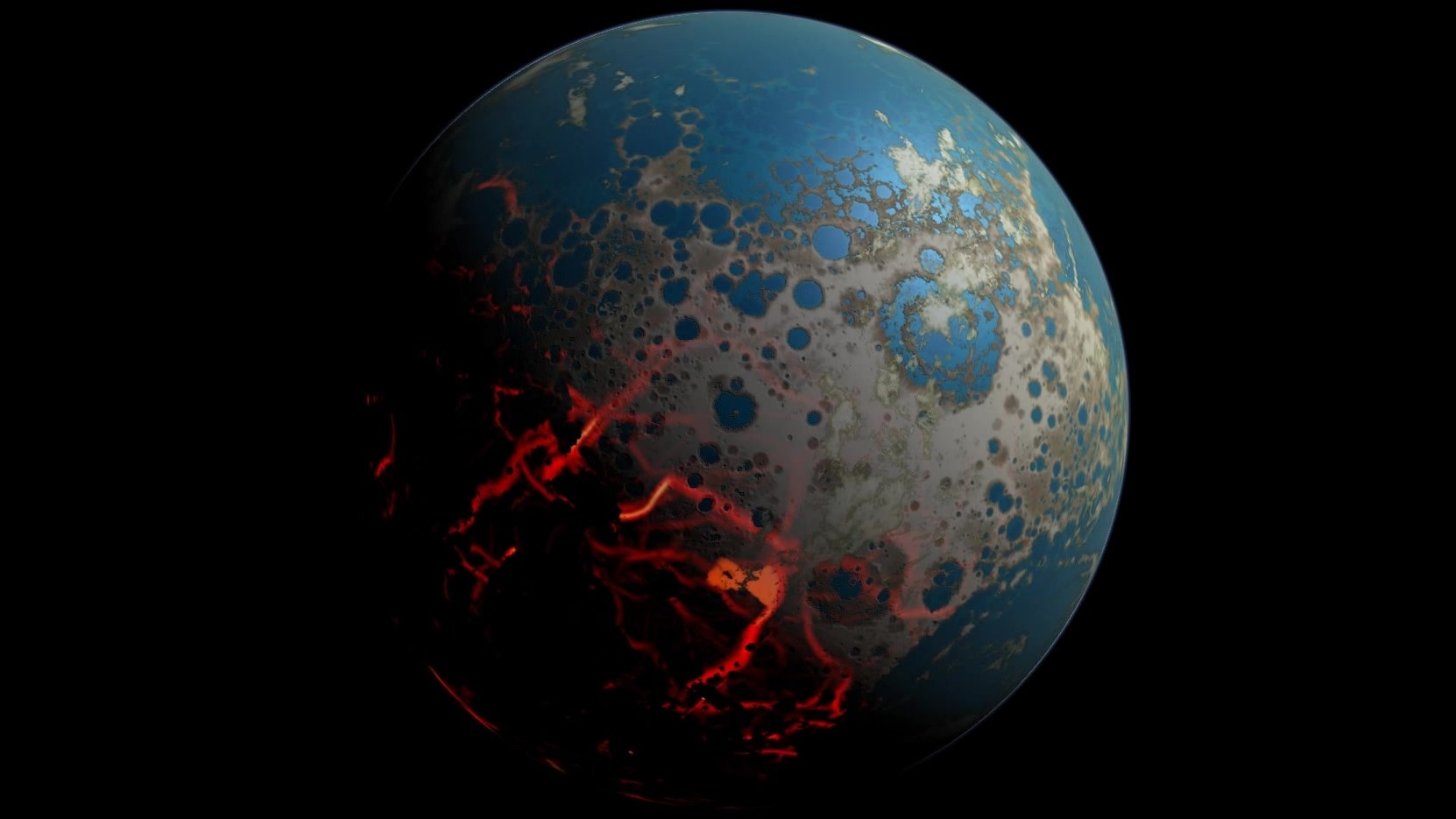Early life on Earth and beyond may have been ocean dwellers
The first life-forms on Earth drew energy from sunlight filtering down into the ocean depths.

By studying the genetic tree of life, scientists have determined that the first life on Earth may have lived underwater, where it would be shielded from harmful ultraviolet light from the sun.
The origin of life on Earth remains a mystery, but scientists are slowly putting together genetic puzzle pieces to learn more about how the first life on Earth lived, between 2.5 and 4 billion years ago. Now, scientists from the University of Wisconsin-Madison and the University of California, Riverside, have used machine learning to trace the evolutionary development of a protein-based molecule called rhodopsin back to some of the most ancient microbial life-forms to have existed on Earth. The results may also inform the search for life beyond Earth, the scientists argue.
"It's like taking the DNA of many grandchildren to reproduce the DNA of their grandparents," astrobiologist Edward Schwieterman of the University of California Riverside, a co-author on the new research, said in a statement.
Related: The 10 most Earth-like exoplanets
The researchers suspect that rhodopsin provided the battery power for early life, turning light from the sun into energy. On modern Earth, rhodopsin can absorb blue, green, yellow and orange light. (It is also tangentially related to the light-absorbing rods and cones that our eyes use to see the world.)
Schwieterman and his colleagues began by using machine learning to look for the genes that control rhodopsin in as wide a swathe of life on Earth as possible, then identifying those genes that had the longest lineages.
This analysis suggested that ancient rhodopsin absorbed just blue and green light. This reduced capability makes sense in a scenario in which early life may have originated in the ocean, where blue and green wavelengths of light penetrate deeper into a column of water than other optical wavelengths: Being able to absorb these wavelengths to derive energy would have been vitally important.
Get the Space.com Newsletter
Breaking space news, the latest updates on rocket launches, skywatching events and more!
And the ocean might have been one of the few safe places for early life to form, since much of the planet's surface would have been out-of-bounds to life. That's because the early Earth's atmosphere had no free oxygen, and hence no ozone layer to protect from harmful solar ultraviolet radiation. Instead, life would have sheltered underground or deep in the ocean, where it would be shielded from the damaging ultraviolet light.
Consequently, the findings teach us about the environment that early life on Earth lived in, and how that life drew energy from its environment.
"We resurrected ancient DNA sequences of one molecule, and it allowed us to link to the biology and environment of the past," Betul Kacar, who is an astrobiologist at the University of Wisconsin-Madison and lead author on the new research, said in the same statement.

"On early Earth, energy may have been very scarce," Schwieterman said, noting that ancient microbes must have figured out how to use what energy was available without complex processes like the photosynthesis that modern plants conduct to turn sunlight into energy-storing molecules.
Although rhodopsin works similarly to chlorophyll, the compound at the heart of photosynthesis, they are not related. Instead, each would have evolved separately to fill the ecological niche not taken by the other.
Rhodopsin really began to evolve into its more modern form about 2 to 2.5 billion years ago, when Earth's atmosphere was suddenly flooded with oxygen produced by microscopic photosynthetic cyanobacteria in what is called the Great Oxidation Event. It's also known as the Oxygen Catastrophe, because the changing atmosphere resulted in the extinction of large numbers of microbial species that didn't breathe oxygen.
The flood of oxygen soon created an ozone layer that warded off harmful solar ultraviolet radiation, allowing those microbes that could adapt to the new oxygen-rich conditions to leave the ocean and subterranean niches, spreading more freely across the Earth's surface. And with more wavelengths of sunlight on offer than deep in the oceans, rhodopsin evolved to absorb those, too.
The findings can be applied to astrobiology as well. "Early Earth is an alien environment compared to our world today," Schwieterman said. "Understanding how organisms here have changed with time and in different environments is going to teach us crucial things about how to search for and recognize life elsewhere."
The research is described in a paper published May 7, in the journal Molecular Biology and Evolution.
Follow Keith Cooper on Twitter @21stCenturySETI. Follow us on Twitter @Spacedotcom and on Facebook.
Join our Space Forums to keep talking space on the latest missions, night sky and more! And if you have a news tip, correction or comment, let us know at: community@space.com.

Keith Cooper is a freelance science journalist and editor in the United Kingdom, and has a degree in physics and astrophysics from the University of Manchester. He's the author of "The Contact Paradox: Challenging Our Assumptions in the Search for Extraterrestrial Intelligence" (Bloomsbury Sigma, 2020) and has written articles on astronomy, space, physics and astrobiology for a multitude of magazines and websites.









